Are you caught in an ITSM tool comparison, trying to determine the ultimate solution for your organization between ManageEngine vs. SolarWinds? Look no further – we've got you covered.
Optimizing service delivery and boosting operational efficiency are paramount in today's rapidly evolving business landscape. And selecting the right service desk software is crucial in achieving these objectives.
In this blog post, we'll dive deep into the showdown between ManageEngine vs. SolarWinds – two prominent contenders in the IT Service Management (ITSM) space. But here's the twist: if neither of these platforms entirely meets your unique requirements, don’t worry. We have an alternative solution that might just be your perfect match – InvGate Service Management. This robust ITSM solution offers an impressive array of features designed to streamline your service delivery and empower your organization.

Table of contents
- TL;DR
- What is ManageEngine?
- What is SolarWinds?
- Considering InvGate Service Management as an ITSM solution alternative
TL;DR
- ManageEngine is praised for its diverse product portfolio and high growth. At the same time, it has been said that its integrations beyond Zoho Ecosystem can be limited and there has been issues with vulnerabilities. In 2023, ManageEngine faced a notable setback with the discovery of two significant vulnerabilities across 24 of its products.
- SolarWinds provides comprehensive ITSM features, a user-friendly interface and offers customization plus efficiency gains. However, users face challenges with initial setup, integrations, workflow complexity, and reporting.
- InvGate Service Management comes in as a strong option, offering a streamlined configuration and setup process using a no-code/low-code approach, exceptional user experience, and a cost-effective solution without compromising functionality.
We tried to be as thorough as possible, but if you don't have enough time to read it through and through, here's (another) TL;DR: InvGate Service Management can do everything we say here, and you can test it right away for free for 30 days.
Most looked-at features by buyers
When buyers assess ITSM solutions, they focus on specific features that align with their organization's needs. Understanding these desired features is crucial for making well-informed decisions.
Let's delve into the key aspects that potential buyers commonly consider when comparing ITSM tools.
- Ticket Management solution - Buyers place significant importance on having a comprehensive Ticket Management System in their help desk software. This feature enables effective tracking, assignment, and resolution of customer inquiries and support requests.
- Customization and flexibility - Buyers appreciate software solutions that provide customization options, allowing them to tailor the platform to their business needs. This flexibility ensures the software aligns with their unique workflows and processes, enhancing user satisfaction and overall effectiveness.
- User experience and interface - The ease of use and interface design are crucial factors that buyers take into account. They value a user-friendly platform with an intuitive interface that boosts user adoption and productivity. Additionally, for organizations with remote or mobile workforces, mobile accessibility is another essential consideration.
- Scalability - When it comes to organizations with evolving needs, they prioritize solutions that can adapt to their growth and accommodate customization. The solution must be able to create custom fields, workflows, and extensions/plugins, allowing it to be tailored to the organization's unique business requirements.
- Support automation and Workflow Management - Buyers actively seek software solutions that offer automation capabilities to optimize routine tasks such as ticket routing, approvals, and escalations. These automation features contribute to increased efficiency and productivity.
- Insightful reporting - Buyers seek help desk software with powerful reporting tools like dashboards and reports, which provide valuable insights into their IT operations and performance. This data-driven approach facilitates informed decision-making and continuous service improvement.
- Seamless integration capabilities - Integration with other systems and applications is a crucial requirement for buyers, as it ensures smooth data flow and process automation. Integrating existing tools and platforms is highly valued for improved efficiency and a unified user experience.
- Self-service portal and knowledge base - Buyers highly value the inclusion of a self-service portal as it empowers end-users to independently resolve common issues and find relevant information without requiring direct assistance.
- Optimized IT service catalog - A streamlined IT service catalog is often required for organizations, providing a centralized platform for users to request specific IT services or resources. This feature simplifies the process of service requests, enhances visibility, and aids in effective service delivery management.
- Efficient Asset Management - Users prioritize software that offers robust IT Asset Management capabilities to help them maintain accurate inventories and optimize resource utilization within their organizations.
- ITIL compliance - Adhering to ITIL best practices for IT Service Management is a priority for many organizations. In their evaluation, buyers may give prominence to solutions that support ITIL processes, such as Incident Management, Problem Management, Change Management, and Asset Management.
- Pricing and support - Buyers consider the solution's cost-effectiveness, including licensing models, subscription plans, and additional costs for features or users. The availability of reliable customer support, comprehensive documentation, and accessible training resources also play a significant role in the decision-making process.
What is ManageEngine?
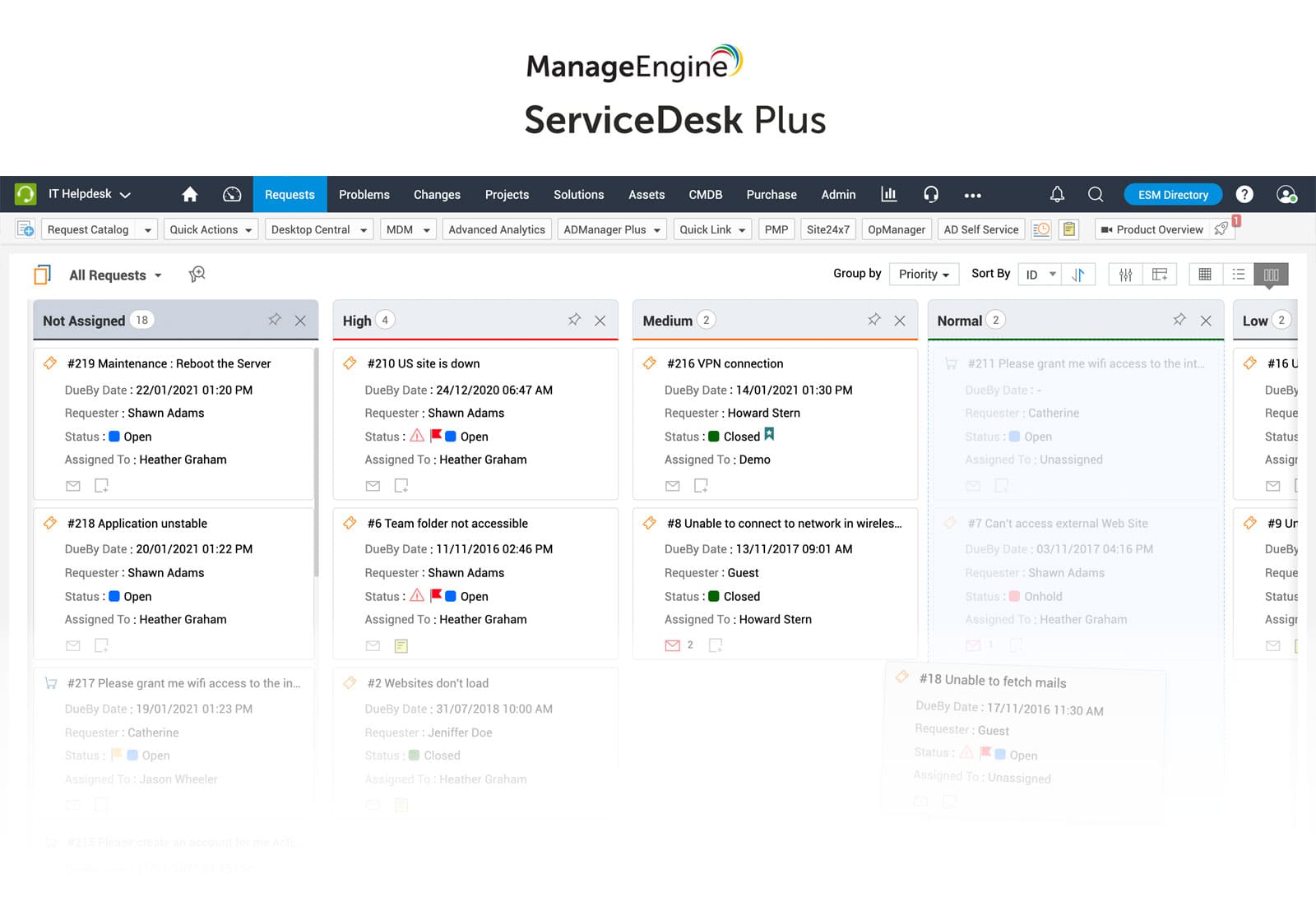
Previously known as AdventNet Inc., ManageEngine rebranded in 2009 and now operates under the name Zoho Corporation. Specializing in comprehensive solutions for IT Management, ManageEngine caters to businesses of all sizes, focusing on small and midsize enterprises. The company is headquartered in Pleasanton, California, and has established a significant global presence by serving more than 180,000 customers worldwide.
Among ManageEngine's prominent offerings is ServiceDesk Plus, a platform that provides flexible deployment options, including both cloud-based and on-premise solutions. ServiceDesk Plus encompasses a wide array of capabilities, covering ITSM and ITAM. In the Gartner Magic Quadrant, ManageEngine holds the position of a Challenger, indicating its strong competitive standing within the market.
What users like from ManageEngine
ManageEngine has received recognition from reputable sources like Gartner, reflecting its customers' positive feedback and satisfaction. Let's explore some of the key advantages that users have highlighted.
- Comprehensive product portfolio - ManageEngine offers a wide range of complementary products that cover various domains, including endpoint management, network monitoring, application monitoring, and active directory management solutions. Leveraging the low-code development capabilities and line-of-business integrations provided by its parent company, Zoho, ManageEngine delivers a comprehensive set of platform capabilities. This diverse product portfolio creates opportunities for cross-selling and provides customers with enhanced value.
- Impressive growth - ManageEngine has displayed strong growth potential, evidenced by its flexible deployment options and successful positioning in the midmarket segment. In 2021, the company experienced notable revenue growth and expanded its customer base significantly. Particularly in the enterprise sector, ManageEngine has achieved considerable success, establishing itself as a rapidly growing player in the industry.
- Competitive pricing - The platform stands out with its competitive pricing strategy, offering highly cost-effective ITSM solutions. With multiple pricing tiers available, the software caters to various budgets, making it an appealing choice for midmarket customers and larger organizations seeking value-driven solutions.
What users don’t like from ManageEngine
While ManageEngine has numerous strengths and positive attributes, customer concerns and criticisms have been raised regarding certain aspects of the platform. These areas of apprehension have been identified through analysis of reputable sources such as Gartner. Let's explore specific areas that have raised customer concerns.
- Limited integrations beyond Zoho ecosystem - The platform's integrations and extensibility are most robust when used in conjunction with other ManageEngine and Zoho ecosystem products. This may present challenges for customers seeking seamless integration with popular ITOM tools outside the Zoho ecosystem, potentially requiring them to develop custom API connections.
- Limited product innovation - ManageEngine's primary focus lies in process enhancements, integrations, and customization support rather than pushing the boundaries of product innovation. While the company has incorporated some AI/ML capabilities in certain areas, such as field and template recommendations, it still falls behind more advanced products in this category.
- Security vulnerabilities - In 2023, ManageEngine faced a significant setback when two critical vulnerabilities were discovered across 24 products. These vulnerabilities were rated with high severity, as they had the potential to enable remote execution of malicious code. However, the company promptly addressed the situation by releasing patches to mitigate the vulnerabilities and strengthen security measures.
- Unclear differentiation in ITSM marketing - ManageEngine's marketing efforts often fail to highlight its unique value proposition in the ITSM market effectively. By primarily emphasizing common themes like low-code development, customer privacy, and deployment flexibility, the vendor struggles to differentiate itself from more established competitors in the market.
What’s ManageEngine’s argument over SolarWinds?
While both ManageEngine and SolarWinds are prominent players in the ITSM industry, ManageEngine brings forth a compelling case for organizations looking to optimize their service desk operations. Here's why ManageEngine stands out as a robust alternative to SolarWinds.
- Comprehensive product portfolio - ManageEngine's strength lies in its wide range of complementary products covering various domains, including endpoint management, network monitoring, application monitoring, and active directory management. Leveraging low-code development capabilities and line-of-business integrations from its parent company, Zoho, ManageEngine offers a comprehensive set of platform capabilities. This extensive product portfolio creates cross-selling opportunities and delivers enhanced value to customers.
- Impressive growth - ManageEngine has demonstrated significant growth potential, evidenced by its flexible deployment options and successful positioning in the midmarket segment. With notable revenue growth and an expanded customer base, especially in the enterprise sector, ManageEngine has established itself as a rapidly growing player in the industry.
- Competitive pricing - ManageEngine stands out with its competitive pricing strategy, providing highly cost-effective ITSM solutions. The software caters to various budgets, making it an appealing choice for midmarket customers and larger organizations seeking value-driven solutions.
What is SolarWinds?
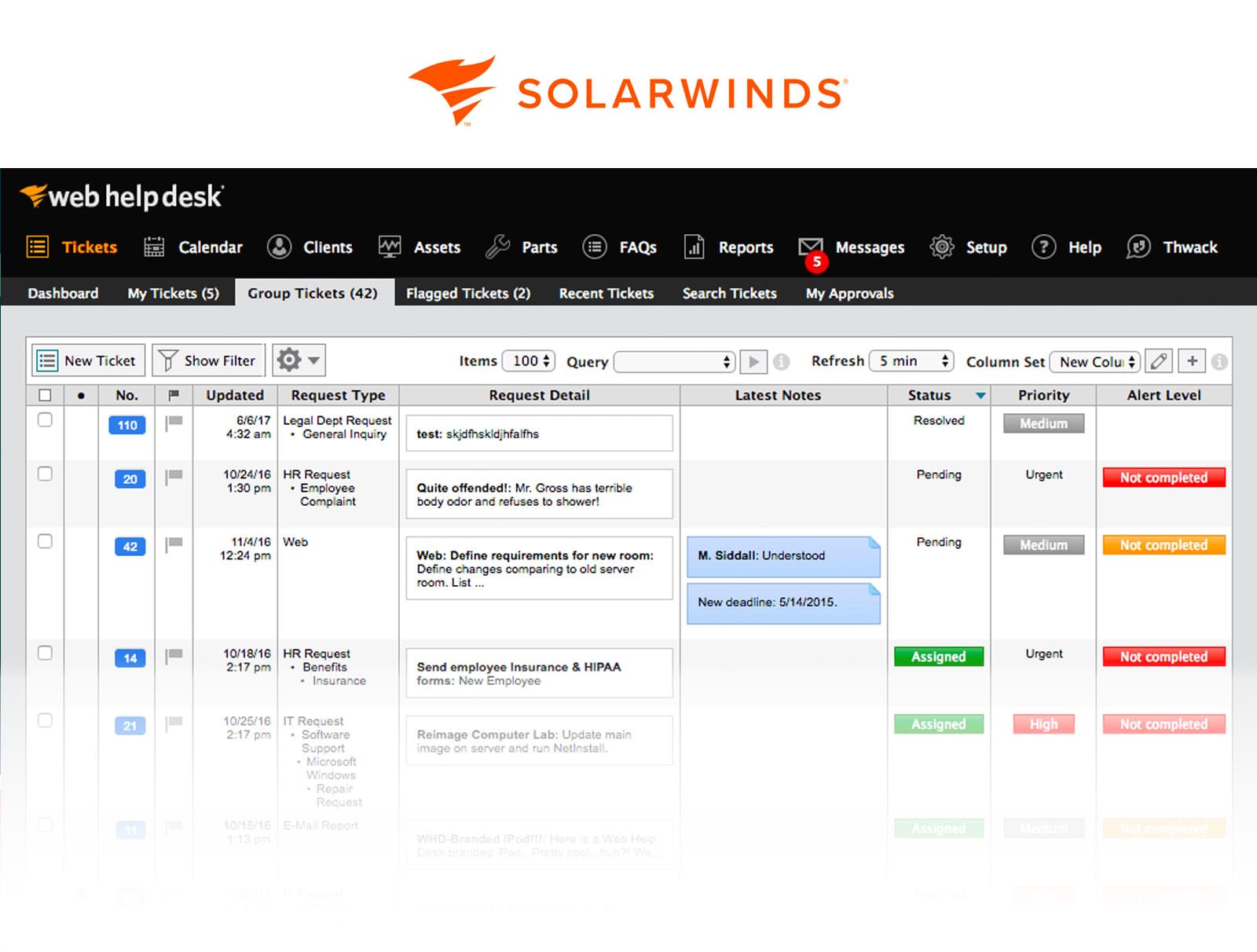
SolarWinds Corporation is a software company specializing in IT Systems Management. Their primary offering is SolarWinds Service Desk, a cloud-based IT Service Management platform. This platform includes a variety of features aimed at streamlining IT operations and enhancing productivity.
These features include automation capabilities, self-service functionality, IT Asset Management tools, and integrations with other systems. The platform is organized into modules for managing incidents, problems, releases, and changes, and it also includes a Configuration Management Database (CMDB). Users of the platform can generate customized reports to gain valuable operational insights.
What users like from SolarWinds
Customers have expressed several positive aspects of SolarWinds Service Desk in reviews from Gartner. Let's explore some of the benefits that customers and experts have highlighted.
- Comprehensive ITSM features - Users appreciate the extensive range of features offered by the platform, including Incident Management, Problem Management, Change Management, Asset Management, and a service catalog. Users highly regard the platform's comprehensive nature.
- User-friendly interface and experience - Users consistently praise the user-friendly interface and ease of navigation. This makes the platform accessible and user-friendly for individuals with both technical and non-technical backgrounds.
- Customization and integration options - Users appreciate the customization options available in the platform, which enable them to tailor the platform to their specific needs. The integration capabilities with other tools and services are also highly praised by users.
- Efficiency and productivity improvements - Users have reported that the software has significantly improved efficiency and productivity by streamlining IT operations and providing effective incident resolution processes.
- Effective ITAM - Users highly value the Asset Management capabilities of the software. The platform allows them to track hardware, software, licenses, and contracts effectively, resulting in efficient IT Asset Management practices.
What users don’t like from SolarWinds
While SolarWinds Service Desk has numerous strengths and positive attributes, customers have expressed specific concerns and criticisms regarding the platform. Let's explore some of the issues highlighted through analysis from reputable sources like Gartner.
- Localization and language support - Some users have suggested that SolarWinds Service Desk could improve support for multiple languages and enhance localization features to cater to a more diverse user base.
- Limited customization options - Some users have mentioned that the customization options available in the platform are limited and could benefit from expansion.
- Integration with third-party apps - Users feel that there is room for improvement in terms of supporting seamless integrations with third-party applications within SolarWinds Service Desk.
- Limitations in reporting functionality - Users desire improved reporting capabilities and more comprehensive analytics within the software.
- Challenges in initial setup and implementation - A few users have mentioned that the initial setup and implementation process of SolarWinds Service Desk can be time-consuming, particularly when importing existing inventory.
- Complex workflow - Some users find the workflow within the software to be complex or cumbersome, indicating a need for simplified processes.
- Limitations in search functionality - Users have noted limitations in the search functionality of the tool, suggesting the need for enhancements in this area.
- A desire for additional features - Users have expressed a desire for other features to be added to the tool, including a calendar booking system, webhooks for integration purposes, and enhanced functionality on the mobile app.
What’s SolarWinds’ argument over ManageEngine?
SolarWinds presents a strong case as a leading ITSM solution, offering several compelling advantages over ManageEngine. Here's why organizations should consider SolarWinds as a superior choice.
- Comprehensive ITSM features - SolarWinds Service Desk has an extensive range of ITSM features, including Incident Management, Problem Management, Change Management, Asset Management, and a service catalog. This comprehensive nature of the platform ensures that organizations have all the necessary tools to manage their IT operations and deliver high-quality services effectively.
- User-friendly interface and experience - SolarWinds Service Desk prioritizes user experience with its intuitive interface and seamless navigation. Users consistently praise the platform's user-friendly design, which caters to both technical and non-technical users. This accessibility promotes quick adoption and reduces the need for extensive training, maximizing organizational productivity.
- Customization and integration options - SolarWinds Service Desk offers robust customization options, allowing organizations to tailor the platform to their needs. Users appreciate the ability to customize workflows, fields, and templates, enabling them to align the software with their unique processes. Additionally, the platform's integration capabilities with other tools and services receive high praise, ensuring seamless data flow and workflow automation.
- Efficiency and productivity improvements - SolarWinds Service Desk has proven to be a catalyst for enhanced efficiency and productivity. The platform empowers IT teams to deliver timely and impactful services by streamlining IT operations and providing effective incident resolution processes. Automated routing, customizable workflows, and SLA Management further enhance incident resolution processes, ensuring optimized service delivery.
- Effective IT Asset Management - SolarWinds Service Desk excels in ITAM capabilities. Users highly regard the platform's ability to track hardware, software, licenses, and contracts effectively. SolarWinds Service Desk enables efficient asset tracking, maintenance scheduling, and cost optimization by providing a holistic view of an organization's IT ecosystem.
Considering InvGate Service Management as an ITSM solution alternative

Although ManageEngine and SolarWinds are well-known competitors in the ITSM industry, exploring alternative solutions that closely align with your organization's unique needs is crucial. In this context, InvGate Service Management is a compelling option that deserves thorough consideration.
Let's explore the advantageous features of InvGate Service Management that make it a valuable choice for fulfilling your organization's ITSM requirements.
Born for ITSM, perfect for ESM
InvGate Service Management is purpose-built for ITSM while seamlessly extending its capabilities to Enterprise Service Management (ESM). It empowers operational departments to improve their processes and fully embrace the benefits of digital transformation. With a primary focus on ITSM and strong performance in ESM, InvGate Service Management facilitates streamlined workflows and comprehensive digital transformation initiatives across all departments.
Exceptional user experience
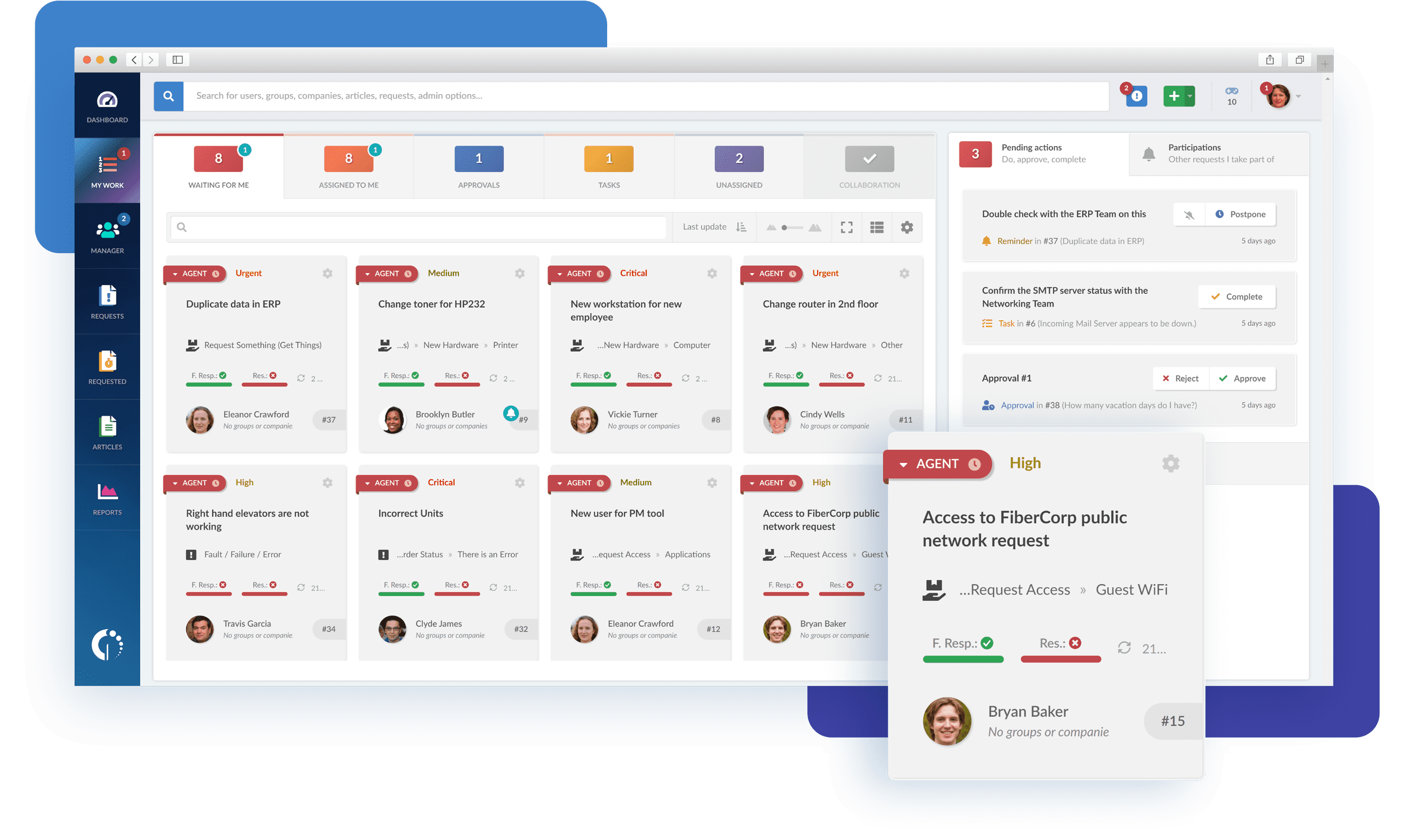
InvGate Service Management prioritizes delivering an exceptional user experience through meticulous design and adherence to UI/UX best practices. Its intuitive interface promotes quick adoption and minimizes the need for extensive training, ensuring a user-friendly design that maximizes productivity.
Simplified configuration and setup
InvGate Service Management offers a streamlined configuration and setup process, leveraging a no-code/low-code approach. This approach allows both new and experienced users to implement the system without requiring extensive technical expertise. The platform provides straightforward configuration options, enabling organizations to harness its powerful ITSM capabilities quickly.
Powerful Ticketing and Incident Management
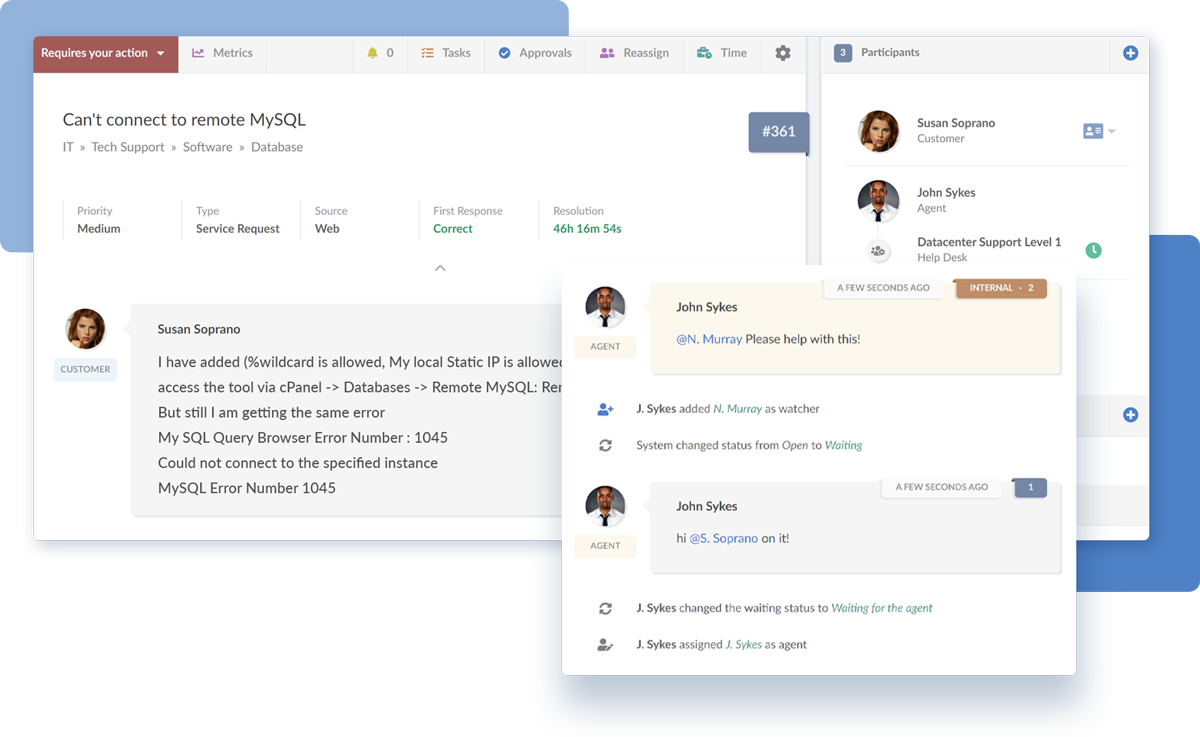
InvGate Service Management excels in robust features for Ticketing and Incident Management. It facilitates efficient tracking, collaboration, and resolution of tickets, empowering IT teams to handle and prioritize incidents effectively. With features like automated ticket routing, customizable workflows, and SLA Management, InvGate Service Management enhances the efficiency of incident resolution processes.
Customization and flexibility
InvGate Service Management offers flexible deployment options, allowing organizations to choose between on-premise or cloud-based solutions. This adaptability ensures that the platform can cater to the specific requirements of different sectors and industries.
Comprehensive Asset Management
By integrating InvGate Service Management with InvGate Asset Management, organizations gain a holistic view of their IT ecosystem, leading to improved service delivery and reduced downtime. InvGate Asset Management offers a range of features, including IT Asset Discovery, Inventory Management, Software License Management, and maintenance schedules.
ITIL-certified readiness
InvGate Service Management has obtained the esteemed ITIL4 certification from PINK Elephant, demonstrating its commitment to upholding ITSM excellence. Whether organizations are starting their ITIL journey or managing complex operations, InvGate Service Management offers a user-friendly and feature-rich experience aligned with industry best practices.
Robust self-service capabilities
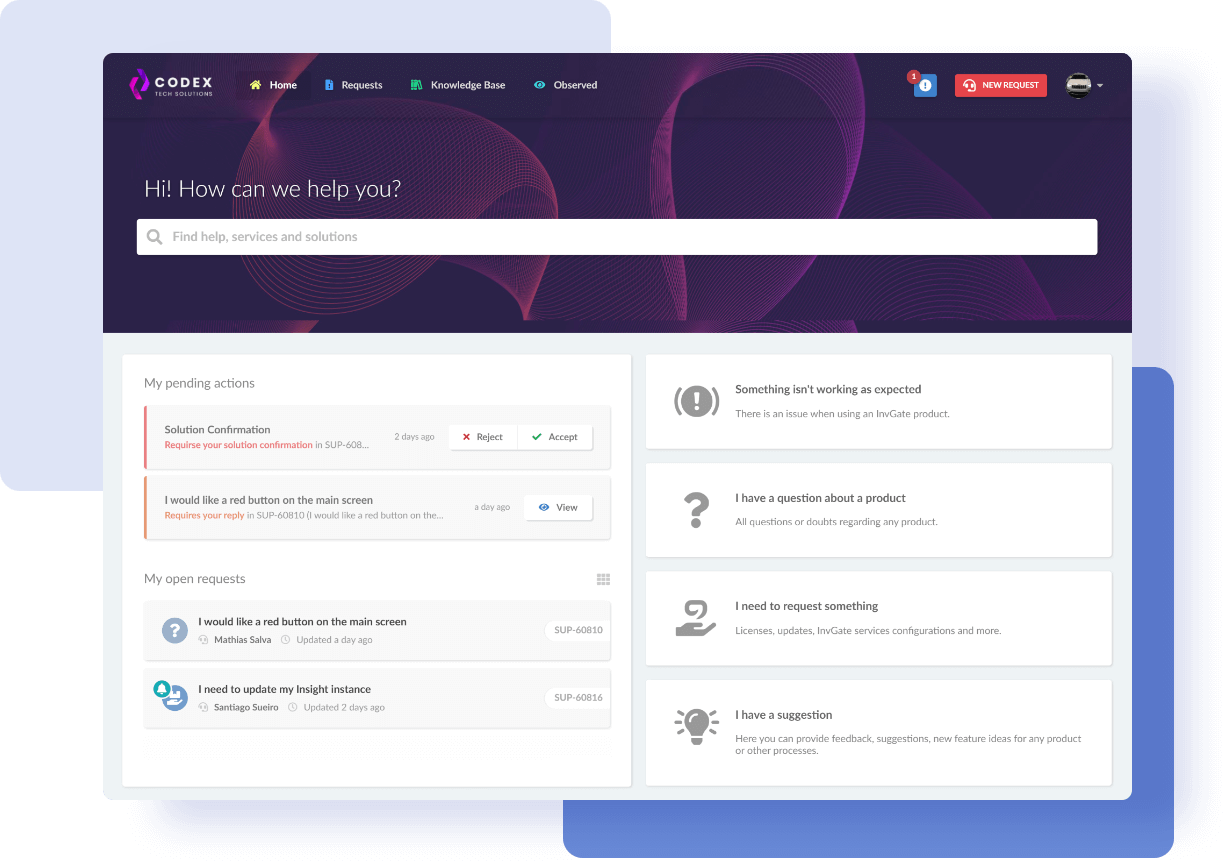
InvGate Service Management includes robust self-service functionalities, such as a user-friendly portal, an extensive IT service catalog, and a knowledge base. These capabilities empower end-users to independently resolve common issues, access a wide range of IT services, and utilize self-help resources, reducing the burden on IT staff.
Extensive reporting and analytics
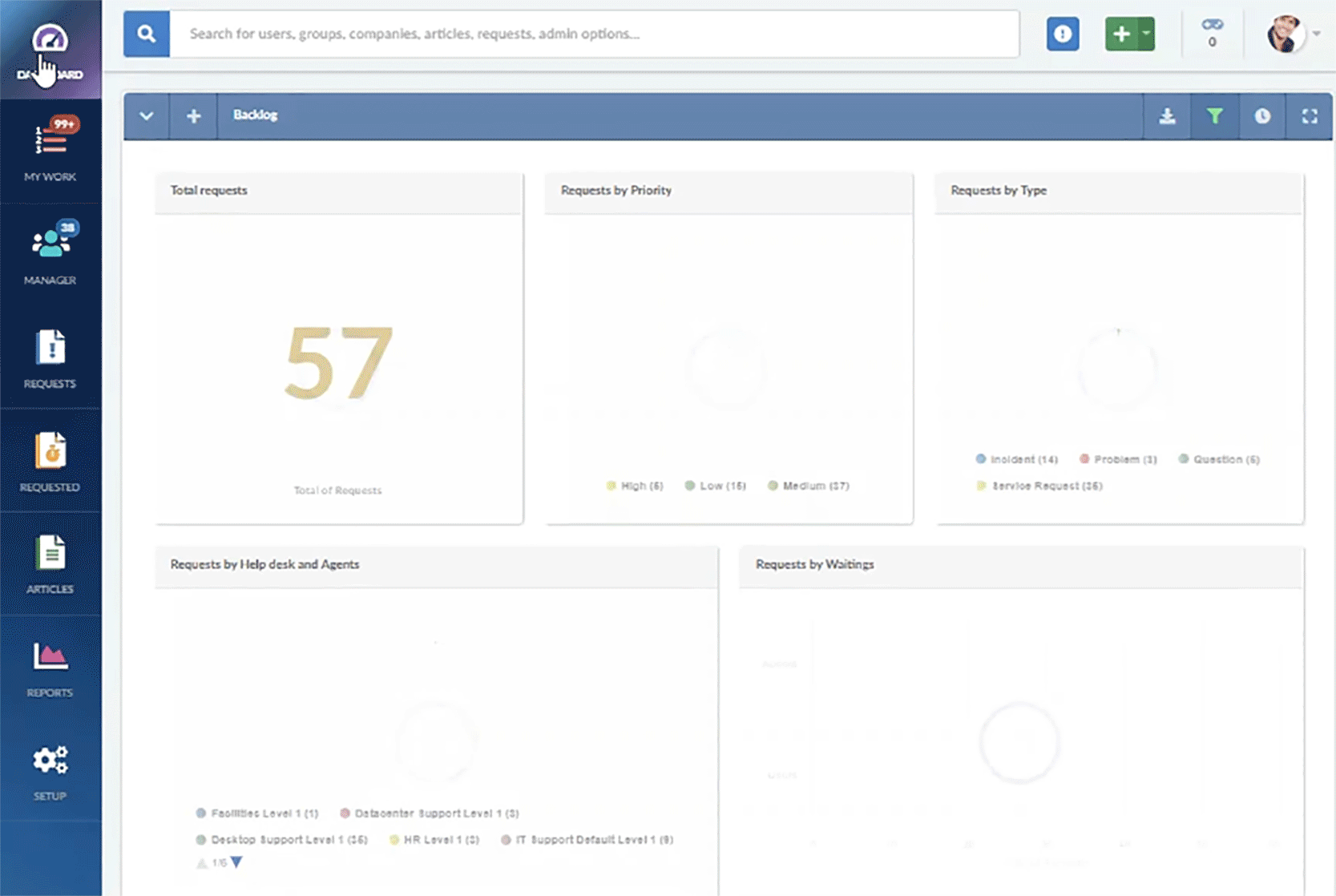
InvGate Service Management provides comprehensive reporting and analytics functionalities, enabling organizations to gain valuable insights into their IT operations and performance. The platform offers ready-to-use reports and customizable dashboards, empowering IT teams to analyze data, identify patterns, and make informed decisions to enhance their services.
Cost-effective solution
InvGate Service Management provides a cost-effective solution without compromising functionality. It offers a comprehensive range of ITSM features at a competitive price point, making it an appealing choice for organizations seeking affordability without sacrificing capabilities. Compared to alternatives like ManageEngine and SolarWinds, InvGate Service Management strikes a balance between cost and functionality.
Fast ROI and ongoing innovation
InvGate Service Management ensures a fast Return On Investment through efficient implementation processes. Within weeks, organizations can begin reaping the benefits of this robust ITSM solution. Additionally, regular feature updates keep users at the forefront of technology without incurring additional costs.
Next steps
When it comes to selecting an ITSM solution, making a well-informed decision is paramount for optimizing your organization's IT services and overall efficiency. Considering the range of options available, it is crucial to evaluate ManageEngine vs. SolarWinds carefully.
However, InvGate Service Management stands out with its streamlined functionalities as a compelling alternative. By choosing InvGate Service Management, organizations can elevate their IT operations and fully embrace the advantages of digital transformation.
To witness the benefits firsthand, explore our live demo and experience how InvGate Service Management can enhance your business operations.
















